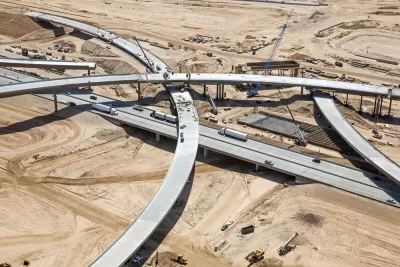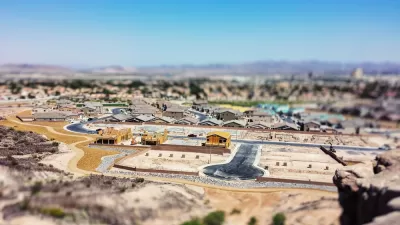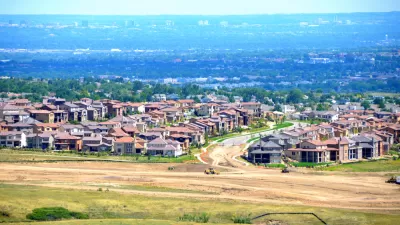The idea that half the world's population has moved to cities, with more coming soon, misses a fundamental fact about cities: many of them are actually suburbs.

An article by Courtney Humphries debunks the commonly cited statistic that half the world's population is living in cities. Karen Seto, a geographer at Yale University, is quoted directly to describe the lost nuance of that claim: "We don’t have 50 percent of the world living in cities….A lot of these people are living in towns and small centers." Or, as Humphries adds, "a far cry from Dubai."
Humphries credits the misconception to a 2007 report by the United Nations as well as the May special issue of the journal Science. An article also from May, by Randy Rieland, made a similar claim about the U.N. report in support of a different argument about the future potential of suburbs.
The problem under examination here: since the U.N. report, many people have been too quick to jump to conclusions about the definitions of "urban" and "city," when in fact many countries define those terms differently and in every country they mean more than one type of place. Humphries follows through to the consequences of the misconception:
Swapping one term for another seems like a harmless convenience. But it directs the attention on urbanization toward big cities — which are iconic and visible places — and away from less exciting areas, such as vast tracts of houses on the fringe of cities, or smaller but increasingly people-packed townships.
Not only does a too-narrow definition erase the many worthy people and causes that live and work in suburbs and small towns, a too-narrow definition also erases the negative externalities of suburban development patterns. Humphries describes that latter consequence as "[missing] the realities of where we live and how our sprawling ways are changing the world."
FULL STORY: Cities Are Not as Big a Deal as You Think

Alabama: Trump Terminates Settlements for Black Communities Harmed By Raw Sewage
Trump deemed the landmark civil rights agreement “illegal DEI and environmental justice policy.”

Planetizen Federal Action Tracker
A weekly monitor of how Trump’s orders and actions are impacting planners and planning in America.

The 120 Year Old Tiny Home Villages That Sheltered San Francisco’s Earthquake Refugees
More than a century ago, San Francisco mobilized to house thousands of residents displaced by the 1906 earthquake. Could their strategy offer a model for the present?

In Both Crashes and Crime, Public Transportation is Far Safer than Driving
Contrary to popular assumptions, public transportation has far lower crash and crime rates than automobile travel. For safer communities, improve and encourage transit travel.

Report: Zoning Reforms Should Complement Nashville’s Ambitious Transit Plan
Without reform, restrictive zoning codes will limit the impact of the city’s planned transit expansion and could exclude some of the residents who depend on transit the most.

Judge Orders Release of Frozen IRA, IIJA Funding
The decision is a victory for environmental groups who charged that freezing funds for critical infrastructure and disaster response programs caused “real and irreparable harm” to communities.
Urban Design for Planners 1: Software Tools
This six-course series explores essential urban design concepts using open source software and equips planners with the tools they need to participate fully in the urban design process.
Planning for Universal Design
Learn the tools for implementing Universal Design in planning regulations.
Clanton & Associates, Inc.
Jessamine County Fiscal Court
Institute for Housing and Urban Development Studies (IHS)
City of Grandview
Harvard GSD Executive Education
Toledo-Lucas County Plan Commissions
Salt Lake City
NYU Wagner Graduate School of Public Service





























